Experiences and retail in Tokyo and Shanghai
I traveled back to Shanghai recently, to visited friends & former collegues. I combined it with a short trip to Tokyo and Osaka in Japan.
Of course I also took pictures and videos from retail locations. This time I did a little less focus on the online commerce as I did that before already.
Earlier I wrote a few posts on LinkedIn on this trip. This blog post is a combination of those LinkedIn posts with some additional context and pictures. It will be a long post with many pictures and some videos, so be prepared to scroll down.
China
Shanghai
It was very nice to be back in China again and a pleasure to use their advanced fintech and payment technology. It makes retail so much more fun. It took a bit of work to get it working as a tourist this time, but I managed to get both Alipay and WeChat pay working again.There is really some improvement needed here, to get that more working more easily for tourists.
The first hotel I stayed at, already had some technology I didn't see before. When a delivery brother brings your food, he can place it in the robot and the robot brings it to your room. Much safer, non guests do not have to go to rooms and you don't have to go down to get your food. The robot even has a 'butler style" paint on it.
They told me, if it gets stuck it rings for help. These type of robots are also used to deliver food in office buildings, at least in Shanghai. Food delivery (during lunch) is massive in Shanghai. They go up and down the elevator and into offices to bring food.
In Shanghai, my second hotel was at the famous Nanjing shopping street. It is always packed with people.My favorite Chinese food is the Jian Bing, a Chinese breakfast pancake. Sellers sell them often in small stores in side alleys. On my quest for the nearest Jian Bing seller, I found this vending machine at Nanjing road that sells really good coffee. I made a video of it (in the early morning as at that time there are not so many people).
The machine can serve two people at the same time, it has a robot arm that makes your cofffee very transparantly. I always pay attention to interfaces, and the two tablets have -even in English- a great interface, you can really easily browse through the 70 beverages. There is upsell, there is lots of explanation about the beans and the quality of the ingredients (an important factor in China).
The vending machine can get your profile info, in my case from Alipay, so it can make tailer made offers for me. Of course I can do the payment completelely via my phone (even the order if I want to).There is a loyalty and coupon function and if you or someone pre-orders, you just scan your QR code and the machine makes a coffee for you.
At the back of the machine you can rent a powerbank if you are in need of some juice for your phone.There is an Alipay miniprogram and with that it is possible to send over your profile data as well. Speaking of data, the machine has a big AI brain that gives all kind of data to optimize the experience and sales. Check out the company that created this machine's webpage.
I think this is a great machine also in the western world with a few adaptions:
- Airports or train stations. Railways or airlines can easily give coupons for free coffee or tea, you just have to scan the received QR code, and as it is all online, it can be even integrated in customer journey campaigns (f.e. automatic free coffee after x minutes delay and at station X).
- Shopping malls. The machine can also be very useful at shopping malls (it's fun to watch for kids, gives a break for the parents and the shopping mall can attract people with it with for example free coffee coupons).
- Workplace.The machine would be a great addition to many workplaces, reducing time to get coffee and increasing conversation.
A few adaptions are needed/useful. Think of:
- A bench at the side integrated, so you can take a rest and drink your coffee.
- Different payment methods of course, this one only accepted Alipay and Wechat Pay.
- Maybe to switch off the sound, as in Asia is common to have sounds everywhere, this one also plays a welcome music the whole day & night. Maybe not everywhere acceptable.
As many cities (at least in Western Europe) are often battling against vandalism, unlike countries like China or Japan, I think this machine is might not be suitable for outside placement in Western Europe in it's current state, unfortunately. That's a pity. Vandalism slows down these kinds of technology innovation in my opinion.
I located this machine at multiple places in Shanghai already.
Cloud Nine Shopping mall
Dream Cloud Nine Shopping mall in Shanghai is a shopping mall I often went to when I lived in Shanghai. It is huge and extremely easy to reach as three metro lines more or less run into this shopping mall. There is direct access from the subway station. Besides that it is next to a big park (when the weather is nice). A great location and the mall is very modern as well. It spans over 9 floors and you can really buy anything here, from cars, to a huge food court and supermarkets.
And yes, they sell cars in the shopping mall:
The most annoying things of these huge shopping malls I always find, is the walking part. It is so huge, and if you have to be at an upper floor that takes lots of time, especially if you do not exactly know where to go.
When I walked in the mall, I saw a couple of , what at first looked like robots, but appeared to be riding vending and information machines.
So I checked it out. Turns out the machine sells products (in this case small toys, but I guess this could just as well have been drinks for example). The machine promotes the shopping mall's loyalty programme at one side and the other side has an advertisement for a shop at the 6th floor. Now that's nice to get people up 6 floors, because as I wrote earlier, it is always so time consuming. There are always lines at elevators and 6 floors on escalators takes time as well.
It is a vending machine as well, I bought a small toy that is distributed via the top of the machine, all via Alipay online payment)
It can inform /attract/motivate visitors of the mall to go to upper floors
As I wrote earlier, it is always a hassle to go to upper floors. In another shopping mall in Shanghai, I noticed this "express escalator". Such a good idea, it takes you from the 2nd to the 4th floor in one go. Now thats a good experience!
Try it yourself, this one is in the IAPM shopping mall at Shaanxi Nan Lu, also a great mall in a great area in downtown Shanghai.
I was at IAPM at a rainy day, then they put this machine at the entrance, a machine where you can quickly dry your umbrella. Great idea, many malls in Asia have such a machine, I never saw one in Europe.
It is great to make walks in Shanghai. There is always so much to see. One of the areas that is specifically nice is the area around West Nanjing road. To bring back memories I was just walking a bit one evening and I noticed this flagship store from "the North face"
This store even has a "fridge" where you can try and test before you buy your expedition clothes:
I did not go into the freezer, but they even made it a little nice and comfortable inside when you are testing your clothes. Now that's trust in the quality of your product!
In the shop there is also a mini exhibition. You see clothes that were really used in expeditions, with the story behind it.
Walking in Shanghai surprises many times. That is one of the reasons Shanghai is such a great city. Suddenly in some not too busy street, Isee this 'phone booth like' box.
Turns out there is a traditional phone inside but also a screen. I think it is mostly catered to elderly, as you can also get your pension information from it.
Yeah and you can even create AI versions of yourself! This one is from me:
The AI probably improved version of Alex generated in the phone booth in Xuijiahui
Tech in Shanghai is everywhere and this little phone booth was a great place to rest after a long walk.
Just to give an impression, small stores often include live streaming in China to sell their products.
Love the grind!
— Marco Castelli (@macastel3) November 4, 2023
8am Saturday morning streaming online selling vintage luxury bag! pic.twitter.com/ONPCyLLnXC
Retail in China
China is awesome in retail. There is so much competition, online and offline often go hand in hand and there is something new to see every day. The online commerce space is so vast, competetive and interesting that I can write hundreds of blog posts on that, so that's not for today. I am sure I will be back in one of the Tier-1 cities next year.
As I was this time on a transit visa, I had to leave Shanghai after a few days so I decided to visit Japan again. I haven't been there for maybe 7 or 8 years, so nice to travel back again.
Japan
Japan has a great retail landscape. Digitally less mature than China, but still a thriving retail environment with so many unique shops, themed bars and more.
This visit, I mostly visited some larger brands and took pictures of the shops. I did not have time to visit all the stores I wanted to, but still, I think this overview might help others to get inspired.
Physical retail accounts for the vast majority (71%) of all retail sales in Japan (2022). Despite the decline in the number of stores recently, the average sales per store has been increasing. In 2022, the average sales per store were JPY68 million (USD600,000), up from JPY63 million (USD550,000) in 2019.
Unlike last time in Bangkok, this time, I do not zoom in on the online retail, but just pictures of stores (and a few ads).
Tsutsuya Books
I visited a unique bookstore called Tsutuya. This is way more than a bookstore. I felt it was more of a park combined with a bookstore. A place where you can unwind and spend a day.
Tsutsuya Books stores also sell a variety of other media, such as DVDs, CDs, and video games. They also have a wide selection of stationery, gifts, and other lifestyle items.
One other thing that makes Tsutsuya Books unique is its commitment to promoting culture. Many of the stores have event spaces where they host readings, signings, exhibitions, and other cultural events. They also have cafes and restaurants where you can enjoy a meal or drink while you read or socialize.
Location: https://maps.app.goo.gl/4QUswNZCTR8E535h7
Official site: https://store.tsite.jp/daikanyama/english/
Robot Advice Tokyo Metro
Tokyo subway is vast and it's a labyrinth of tunnels and walkways. It's great if you know where to go, if not you can easily get lost. Did you know there are even websites explaining all these underground walkways and creating routes for it?
Well every day I passed this robot machine, had to try it of course :)
Yes, you can even make a picture with the robot in your favorite pose
Walking in the underground of Tokyo is great, it's safe, clean, there are lot's of retail outlets and mini stores, also from famous brands. Compared to for example, Shanghai, Shenzhen, Hong Kong, Bangkok, the underground passages of the Tokyo subway are more vast and more interesting from a retail perspective. There is really a lot to see and do.
Antenna stores
Antenna stores are stores are located in major cities and cater to specific prefectures of Japan. They are set up by local governments to promote their region's products and culture. They offer food, drinks, and products, but also in many cases travel advice. The most popular antenna shops in Tokyo have 100,000-500,000 visitors a year.
It might be a great concept in Europe as well.

I visited the Hokkaido Antenna store in Ginza and bought two small souvenir products from this prefecture
There are lots of Hokkaido food products available and when I was there, a cook was making fresh Hokkaido food.
Yodibashi Camera
Yodibashi is the largest electronics store chain in Japan. I
went to the Akihabara store, which might be the largest store itself in
Japan. It spans 9 floors full of electronics, home appliances, and more.
They even have at the rooftop a golf and baseball area.
This is really an awesome area and building for electronic fans. I remember my first visit here (and I remembered the company song), where I went to this building to experience the at that time famous i-Mode phones from NTT Docomo. At that time in Europe we didn't have anything like that.
Sometimes they also organize events at Yodibashi, like the Yodibashi Akiba (Playstation) Gaming event that took place recently.
Just like other stores in Japan, also Yodibashi has a company theme song, that plays in the store very very regularly. It is part of Japanese retail culture, many brands have a company song in their stores, often memorable and unique. The Yodibashi one is very nice, link below.
Location: https://maps.app.goo.gl/uFKvuS9yA24qrqiC9
Information: https://tokyocheapo.com/place/yodobashi-camera/
The Yodibashi company theme song, often played in the stores: https://youtu.be/Bnx85z78O2w?si=Vg8ib-k8_OYiRIT8
Line & retail
Line & retail
Line, the #1 messaging app in Japan, just like WeChat, also has the option to use mini-programs. A concept that is very convenient and useful in combining on and offline. Below you see an advertisement I saw at a shopping mall in Osaka. A shopping mall can use Line to attract people to the mall, via a Line mini program and f.e. offer:
- Exclusive coupons and discounts
- Send push notifications
- Create a Line chatbot with an FAQ
- Line offers "digital stamp rallies" that encourage people to visit several stores in a mall and get rewarded for that.
- It is possible for the mall to get direct customer feedback
- The Line data can also be used to do market research,
These things are so convenient in Asia, not only in China but also in Japan and other countries.
Rooftops in Tokyo
Rooftops in Tokyo
I don't know why, I always like rooftops. Bangkok has it's skybars, Tokyo has its rooftop gardens/entertainment rooftops. There are many buildings with a complete park on top of it, like this one at the top floor of a shopping mall.
As you can see, a complete park on top of a skyscraper, and there are more (even more beautiful) in Tokyo.
Information:
https://mainichi.jp/english/articles/20231003/p2a/00m/0bu/005000c
https://www.asahi.com/ajw/articles/15016128
Location: https://maps.app.goo.gl/PJmhuCHyaPgtVABD7
FOOD & LIFE COMPANIES LTD. / Sushiro
Omotenashi: Japanese stores do not simply provide service, they go way beyond
When stores open you are often greeted by all or at least many of the staff. Very attentive and a great sign of hospitality to customers. This is not only valid for shops but also restaurants. The Japanese service industry is very hospitable, much more than in other (Asian) countries in my opinion. The staff will go out of their way to make sure you have a pleasant experience.
This high level of service is based on the Japanese concept of "omotenashi", which is the art of anticipating and fulfilling the needs of others.
This Omotenashi concept is also often used in (UX) design. Japanese UX designers often use this concept to make (web) designs. As an example, you can think of:
- Providing a warm welcome, just like in the physical stores, can of course also be done online.
- To
anticipate the user's needs and provide them with the information and
features they need before they even ask for them. Every time I go into
the Tokyo subway I find the display in the subway so conveniently
designed compared to those in other countries, this must be omotenashi design.
But also the fact that the metro gates are open by default, instead of closed in most other countries. It is anticipating on the user's needs.
This video shows Omotenashi design in practice both visually (metro signage) and physically (ticket gates)
The display shows exactly in which car you are, where it stops, and how to go to your next train (anticipate the user's needs). This also is connected to navigation apps, so you always exactly see in which car to drive to get to your destination or transfer fastest.
- Omotenashi designers provide helpful and constructive feedback to users. For example, when a user makes a mistake, the interface should provide clear and concise instructions on how to fix it.
- Omotenashi designers go above and beyond to make the user feel valued and appreciated. For example, a customer support representative might offer to personally help a user with a problem, even if it is something that could be solved through the website's self-service help center.
So in my opinion, many things to learn from Omotenashi both on and offline.
A Family Mart with a bar integrated in Tokyo
Japan has convenience stores (and vending machines) at literally every corner. In fact, Japan has the most convenience stores in the world, with over 55,000 stores! You can do almost everything in such a store, including banking services or paying utilities. Many are open 24 hours. Now, this one is a special one, this has a bar inside. They are testing this new concept. Convenience stores in Asia, but especially in Japan (and Taiwan) are of another level, so much better than any convenience store in the west.
Now this bar that is integrated sells (almost) obsoleet drinks, so not only good for Family Mart, but also for the customer and the environment.
Have to say I liked it in this bar! But probably this concept does not really work outside of some Asian countries.
This family mart has a bar insideGreat fun, drinking a beer between shoppers
And I am not the only one enjoying a drink
Convenience stores are everywhere in Japan, you even see them integrated in other retail outlets, like for example Muji or in the Tsutaya bookstore I wrote about above.
Information:
There is also the "New Day" convenience store brand in Japan, which is owned by Japan Railways. This convenience store has fresh beer on tap (all via machines). I didn't test that one though but you will find more information in the link below:
https://soranews24.com/2023/05/12/the-japanese-convenience-store-where-you-can-drink-beer-on-tap/
Location: https://maps.app.goo.gl/F7fiVFRmjPuADmse7
Don Quijote
I want to mention Don Quijote as well. This is a discount chain that is famous in Asia. I wrote a topic on that before including a video (see below) on their Bangkok branch. Many of these stores are open 24 hours, but this one, the flagship store, in Osaka is not. Unfortunately, I was there at 7 a.m., and they opened up at 11. Could not visit because my Shinkansen train left at 11.30. But this flagship store has an actual functioning Ferris wheel as you can see, that you an ride for 600 Yen.
It's a great concept, to get an idea what it is like inside, check out this video I made at their Bangkok branche.Super Potato
Super Potato is a video game store located in Akihabara, Tokyo, Japan. It is a haven for retro gamers from all over the world, offering a vast selection of vintage video games, consoles, and collectibles. Although I am not a hardcore gamer, I could not resist taking a look at this special store (mainly catered to tourists). In this store you re-live the glory days of gaming, it really feels like that.
Location: https://maps.app.goo.gl/ZeyHP4AEwm5pbzZeA
Uniqlo
Everyone knows Uniqlo, the Japanese fashion brand. I visted the Ginza Uniqlo. Ginza is the district in Tokyo where all flagship stores are. It looks a bit surreal.
Information: https://www.worldwandering.net/destination-in-japan/the-worlds-largest-uniqlo-store-in-japan/
https://hypebeast.com/2022/11/uniqlo-clothing-repair-remake-service-tokyo-flagship
Just missed this Uniqlo pop-up initiative in Harajuku unfortunately: https://www.nikkei.com/article/DGXZQOUC1150R0R11C23A0000000/
Location: https://maps.app.goo.gl/AW26Th4dvGiS2BNf8
Dream Sleeper Japan
Once I read about the dream sleaper concept. The dream sleeper is a nightbus service in Japan that I haven't seen anywhere else in the world. So because I was in Japan I wanted to try it. I booked a ticket and went to Shinjuku station to board the bus.
Shinjuku bus station is an environment in itself that is super well organised and bustling even around midnight when my bus departed.
The bus is like a hotel on wheels. You get your own private room, a box full of amenities, a pyama and much more. It's a unique experience and you wake up in another city. I think I paid around 80 euros for the all nights trip that took around 6 hours or so. Back to Toyko I took the Shinkansen, Nozomi train and that takes only 2.5 hours, but is mostly more expensive.
I made a video about it, so you can see how it looks.
I can for sure recommend it just for the experience. I took the nightbus dream sleaper to Osaka, but you can take it to many destinations. I booked the ticket via: https://japanbusonline.com/en and/or via https://www.kanto-bus.co.jp/english/nightway/dream-sleeper/
These are concepts probably unique to Japan and might not work elsewhere.Loft
Loft is a Japanese variety store chain that sells a wide range of products, including stationery, kitchen utensils, accessories, cosmetics, toys, travel accessories, and furniture. Loft stores are known for their stylish and modern designs and their wide selection of unique and innovative products.
I like these stores a lot. They are so colorful and you will find trendy (and cute) products. I can recommend also that every Amazon or platform seller that is active in this product range to check this brand. There is lots of inspiration to be found in this store.
Look how colorful everything looks. It's a joy to enter this store.Lots of floors, it will take you some time to visit them all
They also offer local products, from the immediate area.
They also have limited edition products regularly
The Dream Sleeper Tokyo-Osaka
Thanks for reading this blog post
A shopping mall in Hilversum at 7pm a friday night
Thank you for reading this blog post, it's always nice to get into contact with people who have the same interests, so do not hesistate to connect and contact.






































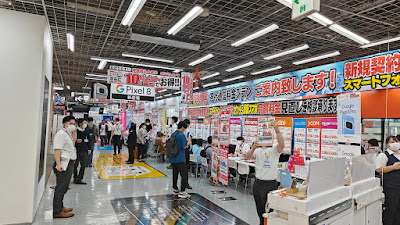

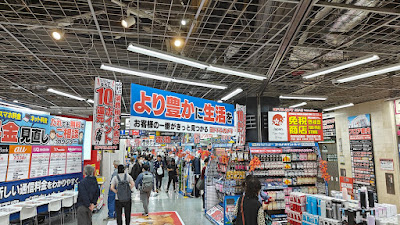


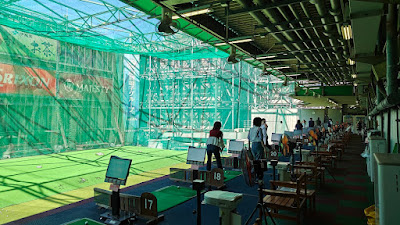






















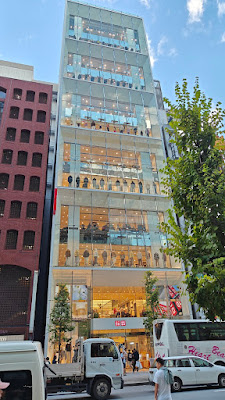
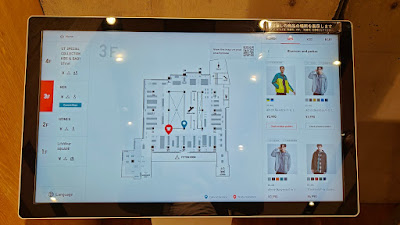





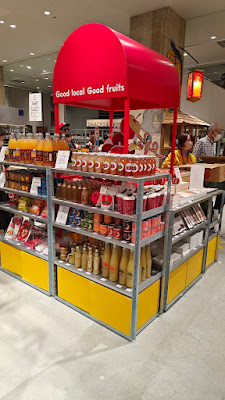








Comments
Post a Comment